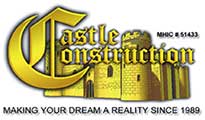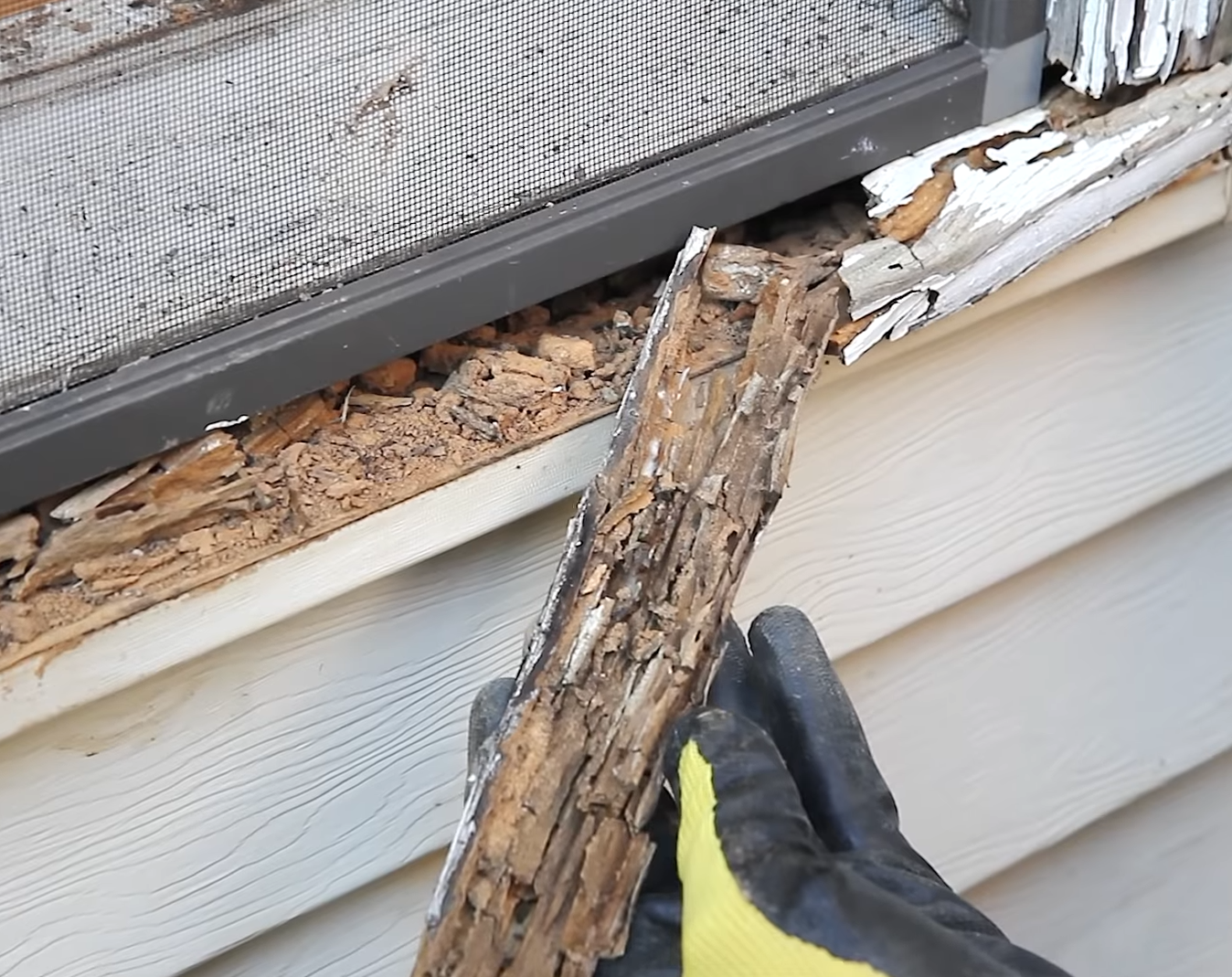Termite damage to wood can be devastating. These small, destructive pests can weaken the structural integrity of your home, causing costly damage. If you’ve discovered termite damage in your wood, it’s crucial to address the issue promptly and effectively. We will explore the steps you can take to fix termite damage in wood.
By following these guidelines, you can protect your property and prevent further infestation. With the right approach, you can restore the integrity of your wood and ensure long-term protection against termites. Read on to learn how to fix termite-damaged wood.
Understanding Termite Damage
Termites can cause significant damage to wood structures if left unchecked. It is crucial to understand the signs of termite damage in order to take the necessary actions. One common sign is the presence of small holes or tunnels on the surface of the wood. Additionally, you may notice hollow-sounding or weakened wood, which can indicate termite infestation. Another indication is the presence of discarded wings near wooden structures. Several factors can attract termites to wood, such as moisture, warmth, and darkness. It is important to address any issues that may encourage termite activity. Regular inspections and maintenance can help detect and eliminate termite colonies early on.
Assessing The Extent Of Damage
Inspecting affected wooden areas is the first step in assessing termite damage. Look for signs such as hollowed-out wood or mud tubes on the surface. These tubes are used by termites for travelling and protecting themselves from light and predators. Pay attention to any sagging floors, cracked paint or visible tunnels in the wood. It is important to identify the structural damage caused by termites to determine the extent of repairs needed.
Preparation For Repair
Gathering necessary tools and materials: To fix termite damage wood, you will need a few specific tools and materials. It is important to gather these beforehand to ensure a smooth repair process. The tools you will need include a pry bar, hammer, screwdriver, chisel, and a utility knife. Additionally, make sure to have safety equipment such as safety goggles, gloves, and a dust mask to protect yourself during the repair process. Creating a safe work environment: Before beginning the repair, it is crucial to create a safe environment. Clear the area of any obstructions and ensure proper lighting. Make sure to remove any potential hazards that could cause accidents during the repair work. By creating a safe work environment, you can minimize the risk of injuries and carry out the repair process efficiently.
Removing Termite-infested Wood
When dealing with termite-infested wood, it is crucial to take the necessary steps to remove and dispose of it properly. The first step in removing termite-damaged wood is to ensure your safety. Wear protective gear such as gloves, goggles, and a mask to protect yourself from any airborne particles. Start by carefully inspecting the extent of the damage by tapping the wood with a hammer or screwdriver. If the wood is soft and easily breaks or crumbles, it is likely termite-infested and should be removed. Use a pry bar or a chisel to carefully remove the damaged wood. Start at the edges and work your way inward, ensuring that each piece is detached properly. Be cautious not to damage the surrounding areas during the removal process. Once the infested wood is removed, it is essential to dispose of it in a manner that prevents the spread of termites. Contact your local waste management facility to inquire about proper disposal methods, as they may have specific guidelines in place for disposing of termite-infested wood.
Treating The Infested Area
Termite damage to wood can be a frustrating problem for homeowners. However, treating the infested area promptly can help prevent further damage and ensure the complete eradication of termites. The first step in treating termite damage is to apply termite treatment solutions. These solutions are designed to kill termites on contact and prevent them from re-infesting the wood. When applying termite treatment solutions, it’s important to follow the instructions provided by the manufacturer carefully. This may involve spraying the solution directly onto the infested area or injecting it into the wood. It’s also important to treat the surrounding areas to prevent termites from spreading. In addition to applying termite treatment solutions, it’s essential to address any moisture issues that may be attracting termites to the wood. These can include repairing leaky pipes or improving ventilation in damp areas. Regular inspection and maintenance of the wooden structures can also help detect and address any termite activity early on.
Repairing The Damaged Wood
Termite damage can cause significant problems for wooden structures. To repair the damage, it is important to address the termite tunnels and galleries that have been created. Filling these tunnels and galleries is the first step in repairing the damaged wood. This can be done by using a wood filler or putty. Make sure to apply the filler or putty thoroughly, ensuring that all the damaged areas are properly filled. Once the filler has dried, the next step is to rebuild and strengthen the damaged wood. This may involve replacing sections of wood that are beyond repair. Additionally, reinforcing the damaged areas with wood treatments and epoxy can help to restore the strength and integrity of the wood. It is important to carefully follow the manufacturer’s instructions when using these products. By properly addressing termite damage, it is possible to restore the wood and prevent further issues.
Preventive Measures
Preventing termite damage is crucial to maintaining the integrity and longevity of wooden structures. Implementing termite prevention techniques can significantly reduce the risk of infestations and the subsequent damage they cause. Regular maintenance is key to keeping termites at bay. Firstly, address any moisture issues around your home or property as termites are attracted to damp environments. Repair any leaky pipes or faucets and ensure proper drainage around the foundation. Remove any wood debris or lumber piles from the vicinity of your property, as they can serve as a breeding ground for termites. Reducing direct wood-to-soil contact is another important preventive measure. This can be achieved by installing physical barriers, such as metal screens or sand barriers, between the soil and Termite Damaged Wood wooden structures. Regularly inspect and treat any wooden components of your property for signs of infestation or damage. Apply a termite treatment or use termite-resistant products during construction or renovations.
Finalizing The Repair
If your wood has been damaged by termites, it is important to finalize the repair process to ensure it is fully restored. One crucial step is painting or staining the repaired wood. This not only enhances its appearance but also provides a protective layer against future damage. Additionally, it helps to blend the repaired area with the surrounding wood, creating a seamless finish. After painting or staining, conducting final inspections and touch-ups is essential. This involves closely examining the repaired wood to ensure that the damage has been completely addressed. Any necessary adjustments or fixes can be made during this stage, guaranteeing the integrity and longevity of the repair work. When it comes to termite damage repair in Frederick, Castle company is the best choice. With their expertise and experience, they can effectively identify and address termite damage in wood, providing top-notch repair services that restore your wood to its former glory.
Frequently Asked Questions On How To Fixed Termite Damage Wood
Can You Repair Termite Damaged Wood?
Yes, termite damaged wood can be repaired.
How Do You Permanently Get Rid Of Termites In Wood?
To permanently eliminate termites in wood, follow these steps: 1. Inspect your home for any signs of termites. 2. Contact a professional pest control service for treatment options. 3. Treat the affected areas with appropriate termiticides. 4. Monitor and maintain regular inspections to prevent future infestations. 5. Remove any moisture sources near the wood to deter termites.
Can You Paint Over Termite Damage?
Yes, you can paint over termite damage. However, it is important to first treat and repair the affected areas to prevent further infestation. Seek professional assistance to ensure proper treatment and restoration of the damaged surfaces.
Do Termites Come Back After Treatment?
Yes, termites can come back after treatment. It’s important to regularly inspect your property.
Conclusion
To effectively fix termite damage wood, it is crucial to take immediate action and employ the right steps. Regular inspections, removal of infested wood, treatment with appropriate termiticides, and implementing preventive measures are essential for long-term success. By following these methods, you can restore the integrity of your wooden structures and prevent further damage.


